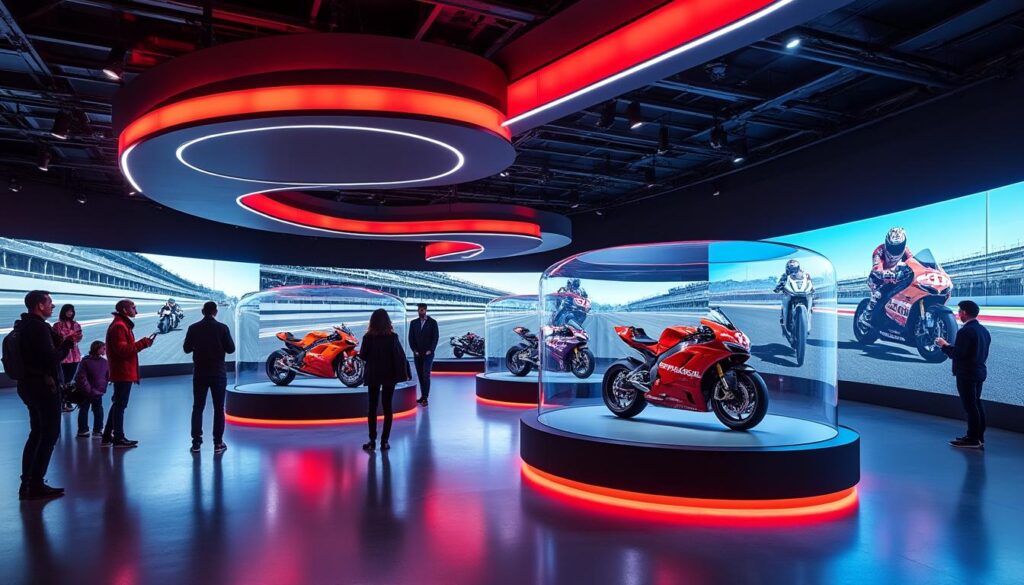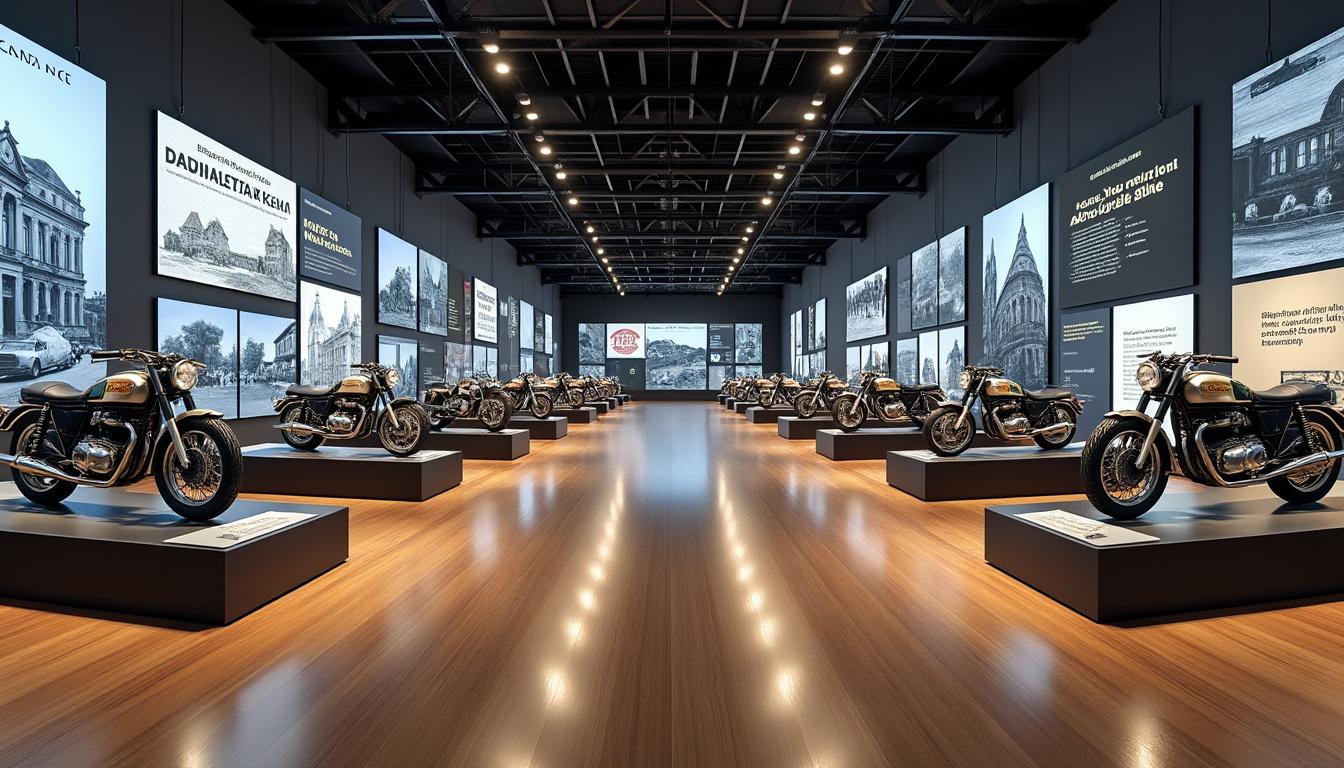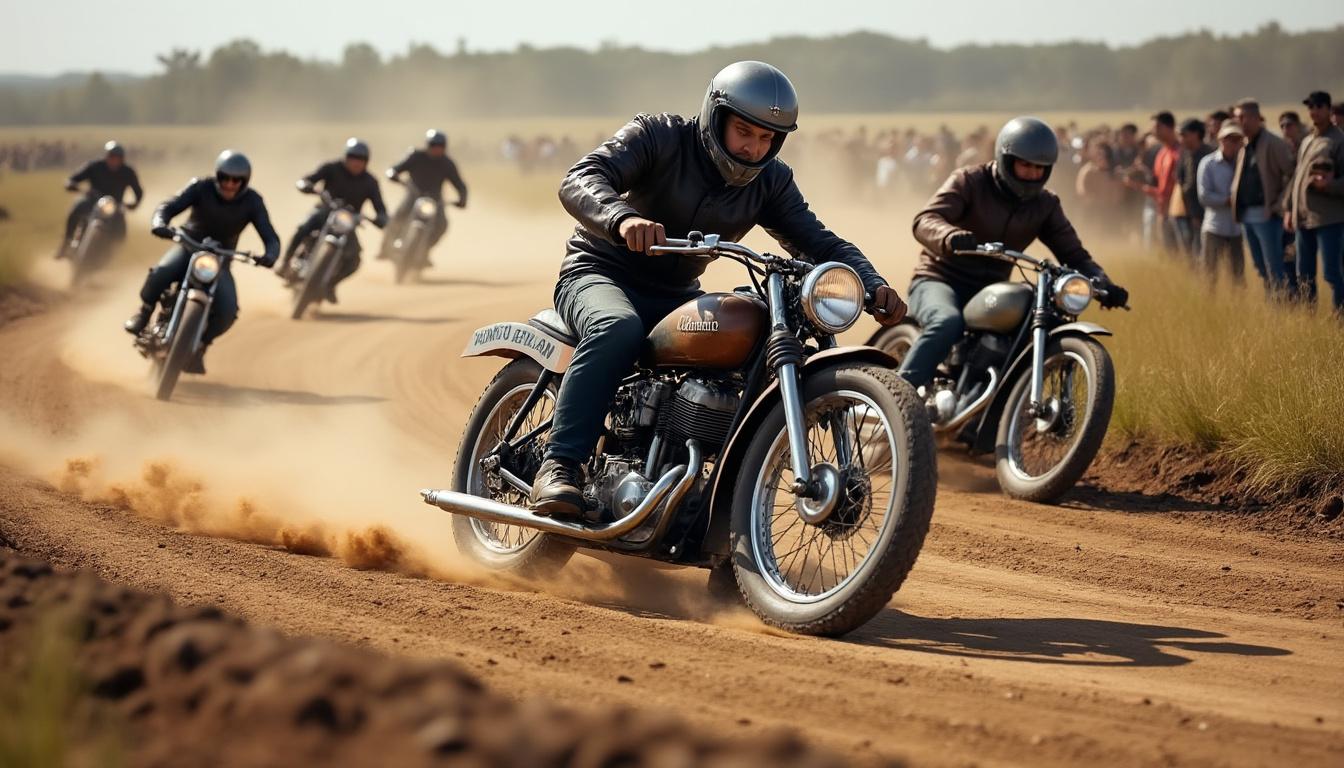Discover a virtual museum dedicated to the heritage of motorcycle sports

In the digital age, access to culture and history is easier than ever thanks to technology. The virtual museum dedicated to the heritage of motor sports stands out by offering an interactive and immersive exploration of motorcycling history. This project, led by the Endowment Fund for the Heritage of Motorcycling (FDPSM), aims not only to preserve the memories of great competitions but also to bring enthusiasts together around a Virtual Moto Gallery accessible to all. From its commitment to raising funds for the preservation of motorcycle heritage to highlighting the history of iconic figures, this virtual museum represents a true celebration of motorcycling identity.
The fundamental role of the Endowment Fund for the Heritage of Motorcycling
Created with the primary objective of safeguarding and enhancing the history of motorcycle competition, the Endowment Fund for the Heritage of Motorcycling (FDPSM) was initiated following the Heritage Days in 2019. In six years, it has established itself as an essential player in the conservation of the heritage of bikers and legendary races. This fund is responsible for gathering various historical materials such as books, archives, photos, films, as well as motorcycles and equipment. Each collected object is then secured and preserved for future generations. In 2021, the creation of a website allowed for the organization of a fundraising campaign, essential for the sustainability of this wonderful initiative.
The mission of FDPSM is enriched by the integration of a documentary fund that is continuously updated with the archives of the French Federation of Motorcycling (FFM). This documentary fund highlights the prominent figures who have contributed to the development of Motor History, but also offers thematic files on iconic families and teams in this sport. This way, the site offers an interactive bikers' museum, where visitors can discover the paths of iconic riders and Heritage Bikes that have marked history.
The major projects of FDPSM in 2025
With the year 2025 in sight, FDPSM plans to expand its activities to increase its impact. Two main areas will be prioritized:
- Enhancement of online visibility: By creating dedicated pages on social media such as Facebook and Instagram, the association seeks to reach a broader audience.
- Collaboration with other organizations: By forming partnerships with motorcycle museums around the world, FDPSM aims to enrich its collections and share its expertise.
The combination of these two areas will allow FDPSM to further anchor the project in motorcycling culture and raise awareness about the importance of preserving the heritage of motorcycling while opening the door to a new generation of enthusiasts.

An interactive exhibition: the virtual museum as a gateway to history
The virtual museum inaugurated by FDPSM is not just a simple website; it offers a genuine immersion into the world of motorcycling. Thanks to advanced technologies, users can navigate through various virtual galleries, discovering unique pieces that trace the evolution of motorcycles over the years. The platform also aims to be educational, featuring rich and varied content.
Visitors can stroll through thematic rooms dedicated to specific subjects. For example, there are spaces dedicated to world championships, highlighting French champions and their achievements. These exhibitions are filled with information about the sporting era, the challenges faced by riders, and the technical innovations of motorcycles. Retrospectives on historical events, such as the legendary races of Montlhéry or the 24 Hours of Le Mans motorcycles, create emotional moments for all enthusiasts.
A rich and diverse content
To enhance this experience, the virtual museum has implemented various formats available:
- Photographic galleries: These galleries showcase rare images of motorcycles, riders, and significant events.
- Documentary videos: Compelling narratives and testimonies from renowned champions reveal the behind-the-scenes of competition.
- Thematic files: These offer historical dives into subjects such as iconic Motorcycle Clubs, legends of motorcycling, and the evolution of racing techniques.
By integrating these different elements, FDPSM ensures to highlight motor heritage, while giving visitors the opportunity to write their own Moto Legacy. Each new visit brings its share of discoveries and helps revive the collective memory of this fascinating sport.
Developments and innovations over the years
Like any field, the history of motor sports has undergone numerous transformations. These changes are not only technological but also cultural. In this section, we will further explore these significant shifts over the years.
Firstly, the technology of motorcycles themselves has experienced a revolution. From the rudimentary models of the 1900s to sophisticated machines, it is fascinating to observe how brands like MV Agusta have managed to establish themselves. For example, the transition from the MV 98 cc of 1945 to the F4 1000R of 2010 is indicative of a remarkable evolution, propelled by victories on the circuits. By incorporating innovations such as electronic fuel injection and electronic suspension management, these brands have redefined what is possible on two wheels.
The impacts of these evolutions
Technical changes have direct repercussions on the experiences of riders. Indeed, in recent years, safety has become paramount. Advances in protective gear, materials, and motorcycle design have reduced accidents and improved racing performances. These are fundamental elements that, from a technical and human perspective, affect every rider on their machine.
Here is a summary table of the greatest evolutions:
| Year | Event | Impact on motor sports |
|---|---|---|
| 1945 | Launch of the MV 98 cc | Beginning of the modern era of competition motorcycles |
| 2000 | Invention of electronic fuel injection | Enhancement of engine performance accuracy |
| 2010 | Introduction of the F4 1000R | Reference in technology and design |
| 2025 | Development of safety innovations | Improvement of comfort and safety for riders |
These innovations demonstrate how important technology has redefined the racing world and contributed to creating a rich and varied history that continues to inspire.

The role of social media in promoting Motor Heritage
In an age where social media dominates communication, FDPSM’s initiatives on these platforms are essential for reaching younger generations passionate about motorcycles. Facebook, Instagram, and Twitter provide spaces to share stories, photos, and videos related to the heritage of motor sports. These channels thus become tools for raising awareness and sharing information about the fund's activities.
Regular posts about Heritage Bikes and past events attract the attention not only of motorcycling fans but also of a wider audience, fascinated by the culture and history of motorcycles. Campaigns on social media engage the public, inviting them to share their own stories and experiences. This creates an intergenerational link, allowing the elders to pass on their passion to the younger ones.
The prospects for the future
To maximize their impact, FDPSM explores partnerships with influencers and personalities from the sports world. Through these collaborations, they aim to strengthen their reach and draw attention to the Motor Museum virtual. In 2025 and beyond, it will become crucial to integrate discussion forums where enthusiasts can meet, exchange, and learn together.
List of advantages of increased visibility on social media:
- Awareness: Reaching a wider audience.
- Engagement: Encouraging enthusiasts to participate.
- Fundraising: Facilitating donations for heritage.
An active presence on social media is not just an option; it is a must to ensure the sustainability and valorization of the entire motor heritage.
Source: www.lerepairedesmotards.com
Leave a Reply



Articles relatifs